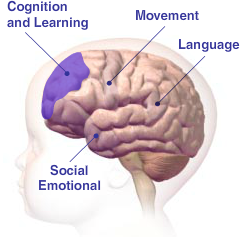The following include lesson plan examples for teaching money concepts, but it could be slightly modified for other math lessons. When teaching any child, it is important to consider what their needs are, strengths are, and the ways in which they learn. Does the child need hands on materials? Can they universalize subjects? Many students with mental retardation cannot. This means they need to learn with real money and in real life situations. That way once the concept is mastered the student can apply it to their life and not just fill out worksheets on it. Consider taking them on a field trip to practice or encourage parents to let the child help out when buying stuff from a grocery store or clothing store. It might also help to peek the child’s interest by using items they are interested in to purchase. For example, if they are into animals, talk about all the various expenses and help them to figure out shopping and care expenses. When looking at this example of a math lesson plan, think of how to make slight alterations to work with your specific kid on their specific need.
Curriculum Guides for Mathematics
Goal:
Students will be able to pay bills, including grocery and clothing, to increase independence in preparation for graduation.
Objectives:
- Student will be able to identify and label money, and then identify value of each piece.
- Student will be able to add their money in order to know amount possess.
- Student will be able to understand concept of spending less than they possess.
- Student will be able to add together items to prepare for check out.
- Student will pay for shopping without assistance.
Day One:
Objective: Student will be able to identify and label money.
Activity: Students will work with the money through flashcards and actual play to work toward identifying money.
Assessment:Student will identify the names and then the value of money pieces.
Day Two:
Objective: Student will be able to add their money in order to know amount possess.
Activity: Student will add money, including coins and dollars on work sheets, computer, and with actual money.
Assessment: Student will be able to add together money
Day Three:
Objective: Student will be able to understand concept of spending less than they possess.
Activity: Students will participate in mock purchasing to better understand value of money.
Assessment: Student will pick out items costing less than what he/she possess.
Day Four:
Objective: Student will be able to add together items to prepare for check out.
Activity: Students will work on adding costs together with calculator or other tools available.
Assessment: Student will pick out two plus items at a time costing less than what he/she possess.
Day Five:
Objective: Student will pay for shopping without assistance.
Activity: Students will be able to pick out items they can afford and then pay for them independently at mock shopping center.
Assessment: Students will be able to pick out items they can afford and then pay for them independently.
Additional Activities
- Students take a field trip to a bank or store.
- Students have a mock money system of earning and spending.
- Student’s can do coloring pages, computer games, and other projects focused on money.
Additional Strategies/Suggestions
- Start with simple ideas, and then add on when student is ready. For example, students will probably learn the names of specific money and then add value to the coins and dollars.
- Students can work on matching/grouping money in order to work on identifying pieces.
- Students may find it easiest to begin with coins and then introduce the paper values of the dollar.
- Encourage involvement of all members that the students engages with in order to better benefit their success.
Resources
Gubler, Warren. (2001). Teaching the Value of a Dollar. Retrieved from http://www.cbsnews.com/stories/2001/01/18/hartman/main265268.shtml
Money Investor. (2004). Basic Money Skills. Retrieves February 20,2006, from http://www.moneyinvestor.com
Thomas, G. E. (1996). Teaching students with mental retardation: A life goal curriculum planning approach. Upper Saddle River, NJ: Merrill/Prentice.




